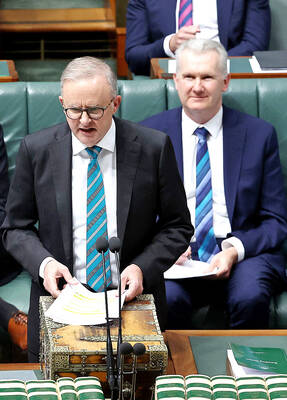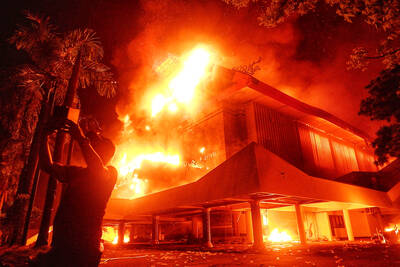Australians are the world's worst individual greenhouse gas polluters if emissions are calculated from the output of the country's power stations, a new analysis says.
Each Australian produces nearly 11 tonnes of carbon dixoide power sector emissions, the US follows on 9 tonnes per person. China produces only 2 tonnes a year per person and Indians emit about half a tonne per person.
The data was compiled by the Center for Global Development, a Washington-based think tank.
It found that the US had nearly one in six of the world's power stations, and emitted nearly 25 percent of the world's total carbon dixoide emissions.
One surprise in the data, the report said, was that the world's biggest emitters of carbon dixoide in absolute terms are in rapidly emerging economies with huge coal-fired plants. Five of the world's most polluting companies are in China and three in the US.
"High US emissions are partly the result of high living standards but they also reflect differences in government policy. Europeans with comparable living standards emit less than half the power sector CO2 of the average American," said Nancy Birdsall, one of the report's authors.
Power stations are the most concentrated source of greenhouse gases. The world's worst is Taichung in Longjing Township (龍井), Taichung County, which emits 41.3 million tonnes of carbon dixoide per year, the report said.
The US produces 2.79 billion tonnes a year and China 2.7 billion tonnes. They are followed by Russia with 661 million tonnes; India 583 million; Japan 400 million; Germany 356 million; Australia 226 million; South Africa 222 million; the UK 212 million and South Korea with 185 million tonnes.

Australia has announced an agreement with the tiny Pacific nation Nauru enabling it to send hundreds of immigrants to the barren island. The deal affects more than 220 immigrants in Australia, including some convicted of serious crimes. Australian Minister of Home Affairs Tony Burke signed the memorandum of understanding on a visit to Nauru, the government said in a statement on Friday. “It contains undertakings for the proper treatment and long-term residence of people who have no legal right to stay in Australia, to be received in Nauru,” it said. “Australia will provide funding to underpin this arrangement and support Nauru’s long-term economic

‘NEO-NAZIS’: A minister described the rally as ‘spreading hate’ and ‘dividing our communities,’ adding that it had been organized and promoted by far-right groups Thousands of Australians joined anti-immigration rallies across the country yesterday that the center-left government condemned, saying they sought to spread hate and were linked to neo-Nazis. “March for Australia” rallies against immigration were held in Sydney, and other state capitals and regional centers, according to the group’s Web site. “Mass migration has torn at the bonds that held our communities together,” the Web site said. The group posted on X on Saturday that the rallies aimed to do “what the mainstream politicians never have the courage to do: demand an end to mass immigration.” The group also said it was concerned about culture,

ANGER: Unrest worsened after a taxi driver was killed by a police vehicle on Thursday, as protesters set alight government buildings across the nation Protests worsened overnight across major cities of Indonesia, far beyond the capital, Jakarta, as demonstrators defied Indonesian President Prabowo Subianto’s call for calm. The most serious unrest was seen in the eastern city of Makassar, while protests also unfolded in Bandung, Surabaya, Solo and Yogyakarta. By yesterday morning, crowds had dispersed in Jakarta. Troops patrolled the streets with tactical vehicles and helped civilians clear trash, although smoke was still rising in various protest sites. Three people died and five were injured in Makassar when protesters set fire to the regional parliament building during a plenary session on Friday evening, according to

STILL AFLOAT: Satellite images show that a Chinese ship damaged in a collision earlier this month was under repair on Hainan, but Beijing has not commented on the incident Australia, Canada and the Philippines on Wednesday deployed three warships and aircraft for drills against simulated aerial threats off a disputed South China Sea shoal where Chinese forces have used risky maneuvers to try to drive away Manila’s aircraft and ships. The Philippine military said the naval drills east of Scarborough Shoal (Huangyan Island, 黃岩島) were concluded safely, and it did not mention any encounter with China’s coast guard, navy or suspected militia ships, which have been closely guarding the uninhabited fishing atoll off northwestern Philippines for years. Chinese officials did not immediately issue any comment on the naval drills, but they